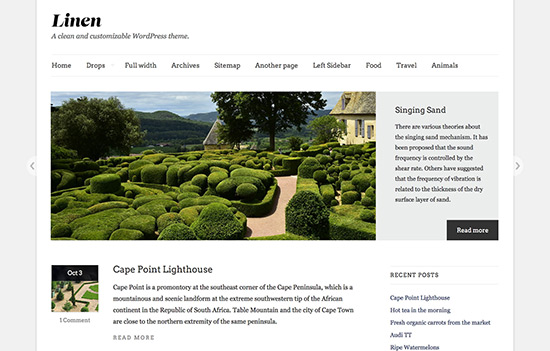Convert a local WordPress XAMPP installation into a live site
By team on July 17, 2007
I recently found this quick and easy tutorial on installing XAMPP Lite locally on Windows XP. This provides a great environment for testing and developing WordPress websites from your PC. The next logical step is converting this nice local installation into a live site as quickly and easily as possible. I found some excellent instructions from The Tamba2 WordPress Guides. These guides contain almost all the information used in this tutorial. I really just combined a bunch of the provided information to accomplish this specific task. I put all the instructions together here in a quick, and (hopefully) easy to follow tutorial. Let’s get started.
Export Your Database
First, we need to export your local XAMPP MySQL database. While XAMPP is running, navigate to http://localhost/phpMyAdmin/. Next, click on the database name you want to export in the menu on the left. Your database tables should be displayed and you should see some tabs running across the top. Click the export tab at the top.
Make sure you check the “save as file” box and then click the go button in the lower right. This will create an .sql file for us to import later. Remember where it is saved.
The Import
- Log in to your hosting account or your webserver and create a new MySQL database for WordPress, call it whatever you want.
- Once you have created your new database, find PHPMyAdmin, and open it.
- Click the name of the database you just created from the dropdown menu.
- At the top of the screen it should say “Server: your_server(probably localhost) Database: your_database_name”
- Click the Import Tab.
- Now click the Browse Button and browse to the location where you saved your *.sql file in the first part of the tutorial.
- Click Go at the bottom.
- You should get a message at the top stating: “Import has been successfully finished, XXX queries executed.”
A couple quick changes
Now we need to make a couple quick changes to the database. Click on the Structure tab at the top and then click the little picture in the wp-options row as seen below.
You should now see a list with a column showing all of the option_name values: siteurl, blogname, blogdescription, etc. You need to change two of them. The first is the very first option, siteurl. Click the little pen button on the left side of the siteurl table row. It is directly to the left of the big red X. You should now see something similar to this:
Type your new blog URL in the big text box. Important: Make sure you do not add a forward slash / at the end of the URL.
Click Go.
Your siteurl row should now display your new blog URL instead of localhost or whatever IP address it was showing before.
Now you must repeat this same exact operation on a different option row with the option_name of home. You may have to use the pagination to view the second page of option rows to find it. It is option_id #39 on a normal WordPress install.
Your new database is now ready to go, exit PHPMyAdmin.
Edit, Upload, and Go!
Browse to your local WordPress installation.
Open up your wp-config.php file and input the MySQL details (username, password, etc.) of the new database you created in the previous step.
Save and close wp-config.php.
Upload the ENTIRE contents of your local WordPress folder to the new location on your webserver. This new location should must be the same one you used in the first part of this tutorial when changing the siteurl and home values in phpMyAdmin. This is important. If the locations are different, it will not work.
Your done, navigate to your new “live” WordPress powered website and enjoy.
wp_config.php file and add the following lines of code to your local version of the file(this will override the two option values we changed earlier in phpMyAdmin)://*Set Path
define('WP_HOME', 'http://localhost' );
define('WP_SITEURL', 'http://localhost');Enjoy this post? Read more like it in Tutorials.






